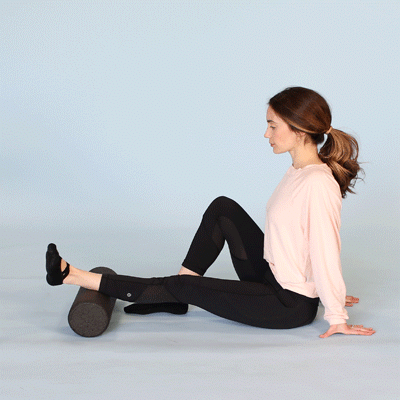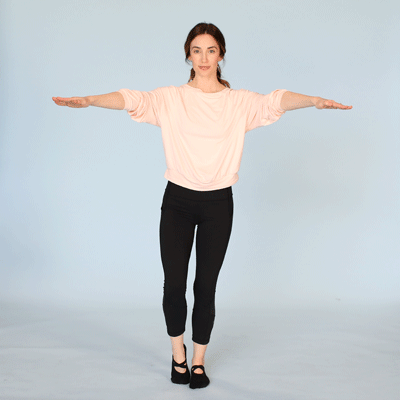Ankle mobility refers to the flexibility of the ankle joint and its surrounding muscles and tendons. When your ankle is flexible, you have a greater range of motion during your activities.
If your ankles are weak, or if you’d like to boost your sports performance, ankle exercises and stretching can improve your mobility and strength.
Including ankle stretching and strengthening in your daily routine will pay off in accident prevention. Strengthening your ankles will also help you walk properly and prevent your knee and hip muscles from weakening.
Here are 12 ankle exercises to add to your routine, three to five days a week.
Start off with a stretch. These circles help your range of motion, and you can do them sitting or lying down.
- Put a rolled towel or foam roller under your ankle.
- Turn your ankle slowly in circles, clockwise 10 circles and counterclockwise 10 circles.
- Move just your foot and ankle, not your leg.
- Vary the stretch by tracing out the letters of the alphabet with your big toe.
You can find more ankle stretches here.
- Stand on a flat surface with your feet shoulder-width apart. Have a chair or wall nearby for support if you need it.
- Holding your arms out to your sides, stand on one foot.
- Do this daily, and try to increase the number of seconds you can keep steady on each leg.
- When you’re able to balance on one foot for 60 seconds, try the following variations:
- balance with your eyes closed
- balance with your arms at your sides
- balance standing on an unstable surface, such as a pillow, folded towel, or a balance disc
- Do 1 or 2 repetitions.
You can also work this exercise into your daily routine. For example, try standing on one foot while you brush your teeth or while you’re waiting in line.
- Stand with your feet about shoulder-width apart. Have a chair or the wall nearby for support if you need it.
- Lift your heels off the floor so that you’re standing on the balls of your feet.
- Slowly lower your heels to the floor. Control is important for strengthening your muscles.
- Do 2 or 3 sets of 10 lifts each.
- You can add resistance to this exercise by holding free weights while you lift your heels.
You can also work this exercise into your daily routine, such as when you’re washing dishes.
This move is more challenging than the heel lift on the floor because it flexes the ankle more.
- Stand on the bottom step with your weight on the balls of your feet and your heels hanging off the step. Use a bannister for support if you need it.
- Raise up onto your toes and then slowly lower your feet, with your heels dropping below the step level.
- Do 2 or 3 sets of 10 lifts each, every other day.
- You can add resistance by holding weights while you do toe raises.
This move uses a resistance band to strengthen your ankle as you point your toes down toward your heel (plantar flexion).
- Sit on the floor with one leg bent at the knee, with your heel on the floor, and the other leg comfortably on the floor.
- Loop the band around the front of your foot, and hold both ends with your hands.
- Point your toes slowly forward and then back, releasing the tension.
- Do 3 sets of 10 flexes on each foot, three days a week.
This exercise uses a stretch band to flex your ankle by pulling your toes toward you (dorsiflexion).
- Sit on the floor with your legs stretched out in front of you.
- Secure the band around a chair leg or a table leg, and then wrap it around one foot.
- Slowly point your toes up toward you and then return to the starting position.
- Do 3 sets of 10 flexes on each foot, three days a week.
You can do this exercise with or without shoes on. It strengthens both your ankles and your feet.
- Walk about 30 feet standing on your toes.
- Turn around, and walk back standing on your heels.
- Repeat 3 to 5 times.
You can also work part of this exercise into your daily routine. For example, try toe-walking around the kitchen.
Lunges help strengthen your ankles and improve your balance. There are many types of lunges. You may want to take it easy to start and work up to more difficult versions. Begin with a static lunge, or doing lunges in place.
- Start with one foot in front of the other, with your toes facing forward.
- Keep your back straight.
- Bend your back knee down so that it almost touches the floor.
- Then push yourself up again.
- Repeat 10 times, and do 2 sets.
Try varying the static lunge and your leading leg. Take three steps between lunges, and alternate your forward leg.
The walking lunge is more challenging. It works your core and lower body. When first trying this move, you may want to have a trainer or exercise professional correct your form.
- Step forward with one leg, and bend that knee at a 90-degree angle.
- At the same time, lower the back knee to the ground. Your thigh should be almost parallel to the ground.
- Hold the position for a few seconds.
- Then take a step forward with your back leg, and repeat the lunge leading with this leg.
- Work up to 10 lunges per leg.
Plyometrics are exercises that involve jumping movements. They’re designed to get your muscles to reach maximal force as quickly as possible.
These exercises require some basic physical strength to start with, so go slowly at first. You may want to have a trainer or exercise professional close by when you do these, as form is important.
Be sure to warm up before you do any of these movements.
Ankle jumps
- Stand straight with your hands on your hips.
- Jump up straight without bending your knees.
- Flex your ankles, and pull up your toes while you’re in the jump (dorsiflex).
- Extend your ankles back just before you touch the floor.
- Push the balls of your feet into the floor explosively, and then jump again. Try to keep your feet on the floor for as little time as possible.
- Start with a few repetitions per set, and do 2 or 3 sets. Work up to 25 repetitions per set.
Double leg hops
- Stand straight with your arms at your sides.
- Jump up straight, raising your arms as you lift.
- Repeat 10 times.
Single leg hops
- Stand straight with your arms at your sides.
- Jump up straight on one leg, raising your arms as you lift.
- Repeat 10 times.
You can also do double leg and single leg hops moving from side to side or backward and forward.
Increased movement awareness
One of the benefits of strengthening your ankles is that it increases your proprioception. This is the technical term for your body’s ability to know where it is in space when you’re moving.
For example, if you’re about to stumble or twist your ankle, your body will be aware of this and prevent the misstep.
Exercises that help with your balance also increase your proprioception. The single leg balance with closed eyes movement is especially helpful in training your proprioception.
A 2015 meta-analysis concluded that proprioceptive training is effective at preventing ankle sprains.
Leg strengthening
Exercises that strengthen your ankles also work to strengthen your larger leg muscles and help give you a proper walking gait.
A
High-heel relief
If you wear high heels for long periods of time, these exercises can be helpful in countering the stress on your ankle joints.
Exercises and stretches that work your ankles are an important part of an exercise routine. Strong, flexible ankles strengthen the base that holds you up. They’re also key to improving your performance in sports, running, and dancing.
Non-athletes also need strong ankles. If you’re an older person, these exercises can improve your balance and stability, which is important for preventing falls.
It’s a good idea to check with your doctor before starting a new exercise routine, especially if you’re recovering from an illness or injury.


